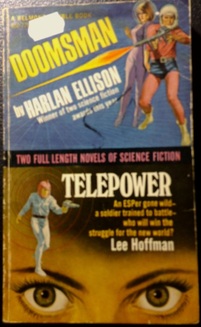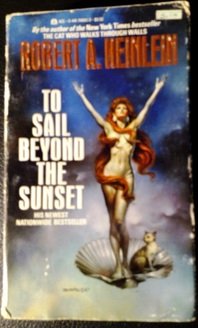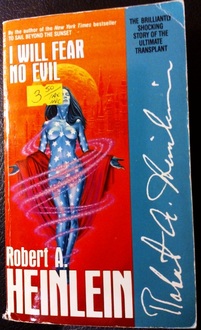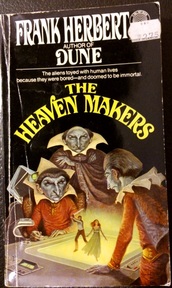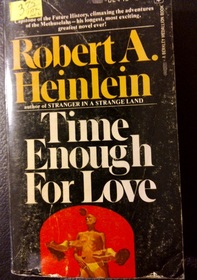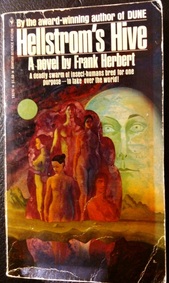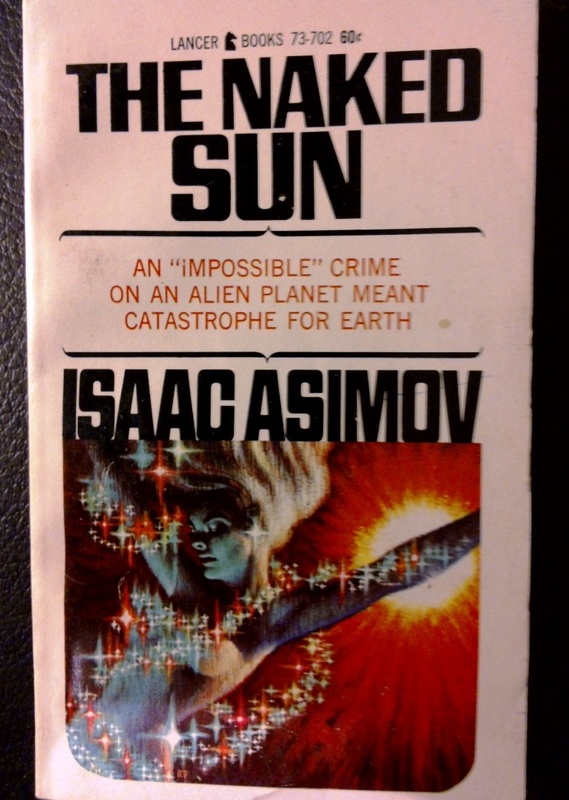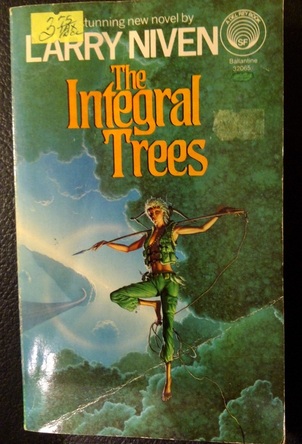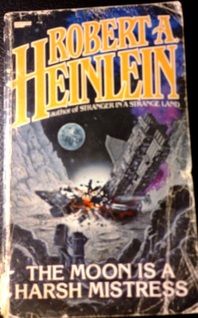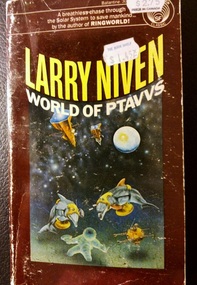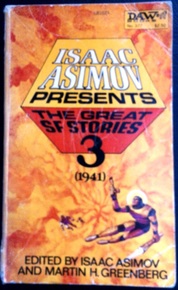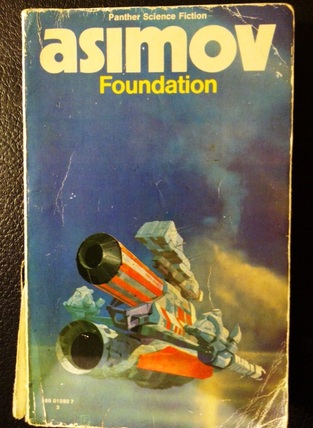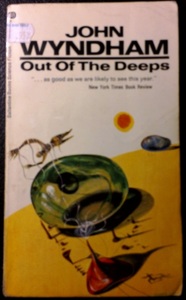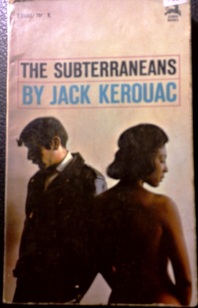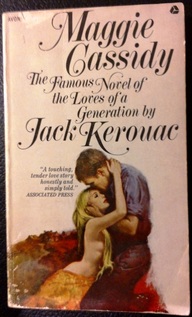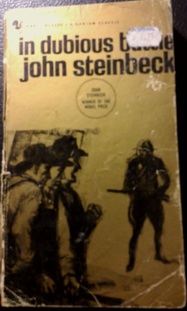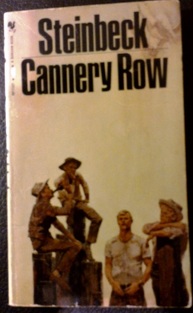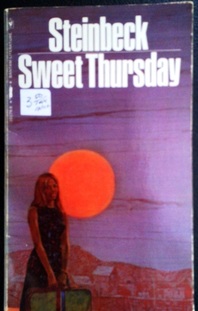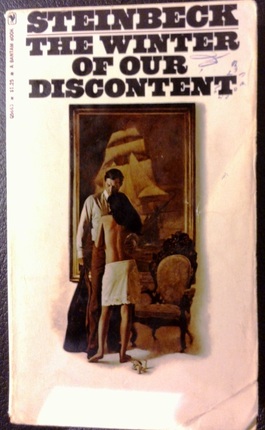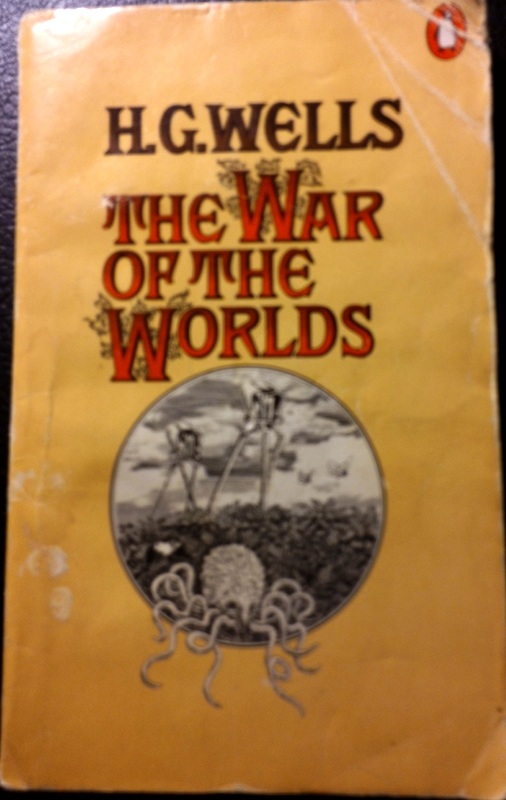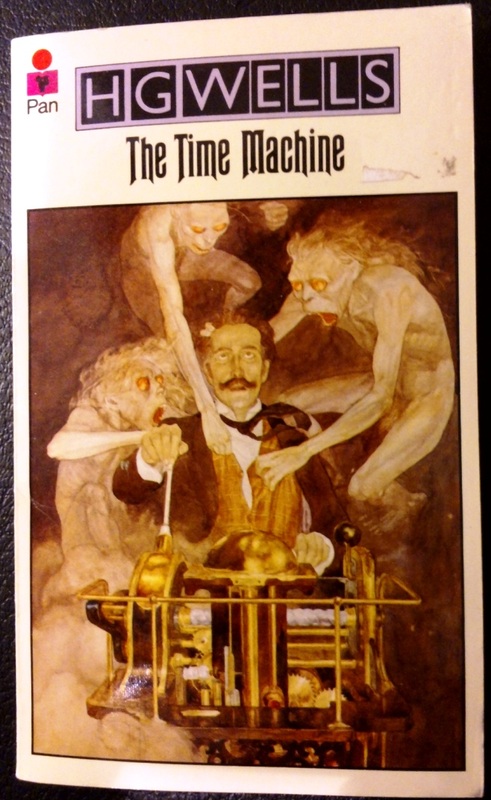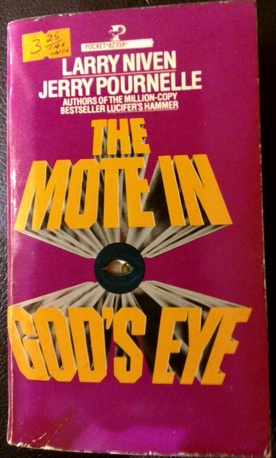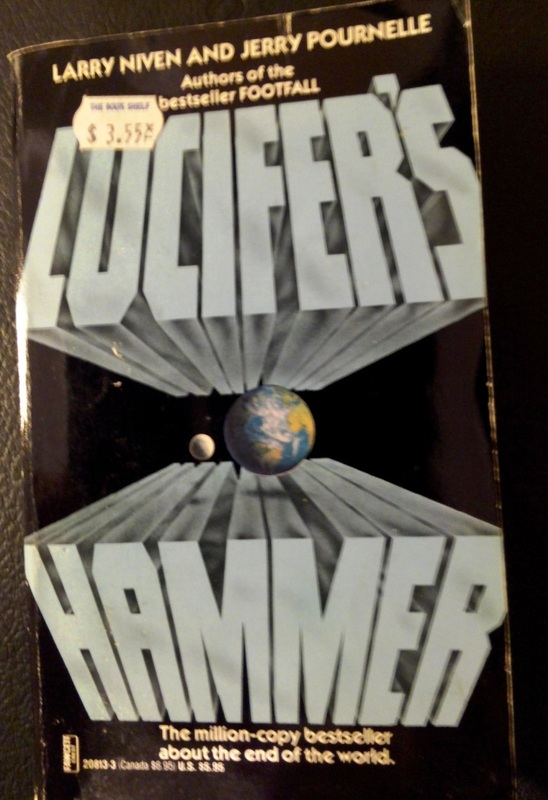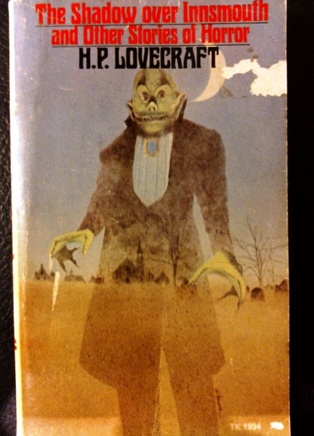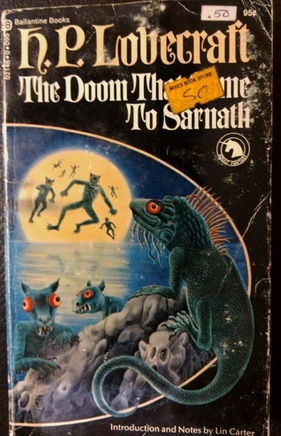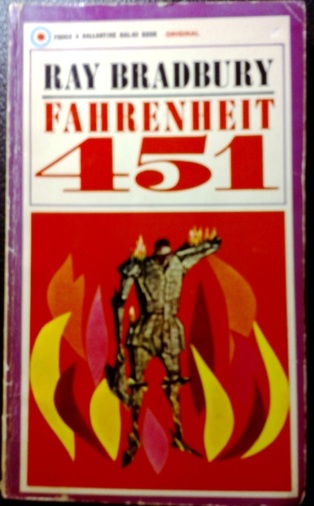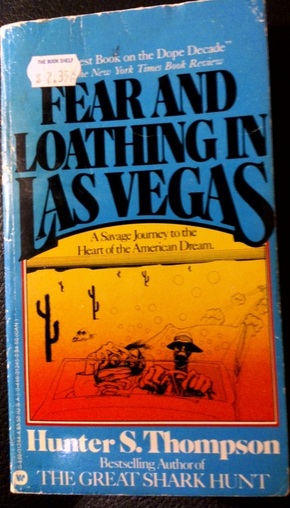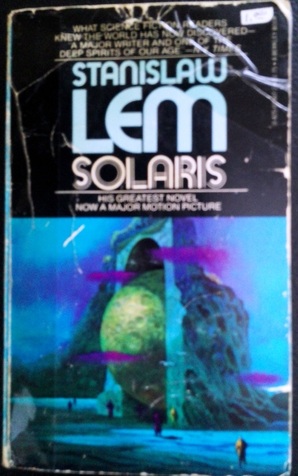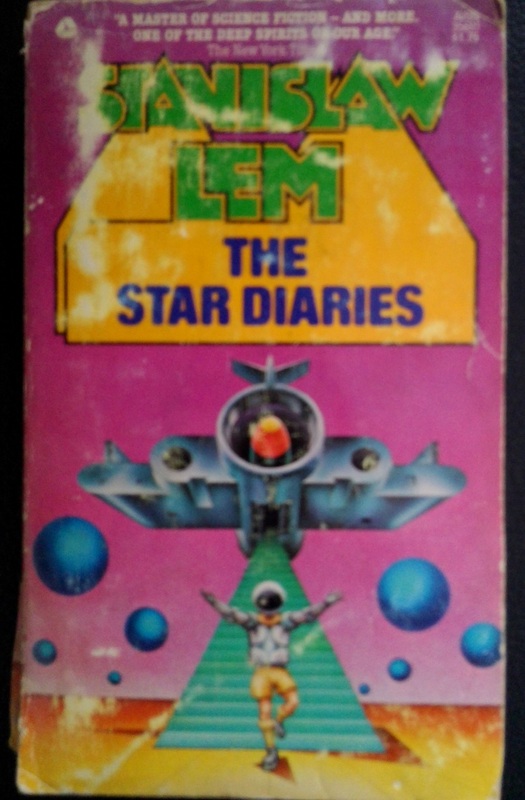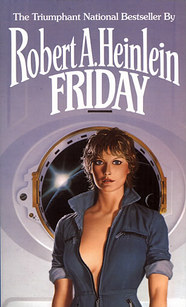
Make no mistake, I'm well acquainted with those. On many occasions I've come across books -- often wonderful critiques of society as a whole, great anthropological fiction, or early thought-experiments on how technological society is changing us all -- that I've simply been too embarrassed to buy because of their covers.
I couldn't bring myself to hand the book to the clerk and say, "Yes, I am interested in purchasing this. Here is real money."
Heinlein's Friday comes to mind immediately. Many times, while delving deep into second-hand shelves in tiny bookstores in small towns in northern places, I came across this book, and always considered buying it.
But nope. Never did. Probably never will.
Heinlein is famous for his space floozies, as I'll try to demonstrate below. Some of his books should have come in brown paper bags.
I have a number of examples of interesting old book covers, but science fiction covers of the 1950s, 60s, and 70s, seem to epitomize a certain way of thinking.
Essentially, the way I see it, many science fiction publishers didn't take their own genre seriously. When it came time to produce covers for what often became classic works of the genre, this is basically how I imagine their line of thinking went:
ANSWER: Adolescent boys.
QUESTION: What do adolescent boys like?
ANSWER: Spaceships. And girls.
| Nothing else. That's it. So what followed were a lot of books that combined the two, often inelegantly, and in go-go skirts, while sort of ... flying through the cosmos. Usually, much like Friday, I couldn't coax myself into buying the more flagrant offenders, but I still have a few fine examples of: | Please pardon the quality of some of the pictures. I was learning how to use a new camera. |
__Space Laaadies__
Mind you, the male 'hero' in the Ellison cover above is also wearing short-shorts over a pink unitard, and what appears to be a motorcycle helmet on his head. All too often, I think science fiction covers of this era were a reflection of what could be achieved at the time by television and film special effects.
Heinlein received a lot of credit with me for Starship Troopers, which slowly dwindled away as I read more of his catalogue. The last of that expired halfway through I Will Fear No Evil, which has the plot complexity of low budget pornography. I put it down mid-paragraph and I've never looked back. Since then, even telepathic nazi Doogie Hauser and the cast of Saved by the Bell in Space versus the alien bugs has been regarded leerily.
I don't recall much about the plot of The Heaven Makers, but I remember enough to know that the cover hardly relates to the book at all. The damsel on this one is rather small, but of course wearing some lovely low-cut evening wear. I always thought the fellow with the cool curvy sword meant to defend her from what appears to be Sesame Street's the Count's close family, but upon closer inspection it looks more like she's running towards the nearest of their captors, and he's getting ready to cut her down.
Just another day at Gringotts.
Of the next two, the Asimov cover is my favorite example of flying space ladies. The publisher just couldn't resist playing up the word 'naked' in the title. As you can see from the Wikipedia entry below, just like all of Asimov's titles -- especially his annoted version of the bible -- the book is a filthy, perverted space romp:
As shown in its predecessor novel, The Caves of Steel, Earth also appears to have evolved an unusual society, in which people spend their entire lives in confined (or "cosy") underground interlinked cities, never venturing outside. Indeed, they become utterly panicked and terrified when exposed to the open air and the naked sun.
__Space Ships__
Many old book covers from the 50s, 60s, and 70s, are fine examples of the art that spawned the genre.
I'm not quite sure what's happening in the covers below, but it sure is 'spacey.' I've noticed that Niven's name tends to get a little heavy around the middle.
John Berkey's work is generally considered classic these days. With a little digging, I've learned he designed the I, Robot cover above.
Chris Foss is the designer for the Foundation cover, which is also a good early example of orange-blue constrast.
Older John Wyndham's books usually have classic examples of space ships and sciency stuff as well:
Some of his more recent editions, however, disappoint in that they attempt to portray what the reader could expect from THE ACTUAL BOOK. I guess that's the Penguin influence.
__Salacious, Naked Beats, and Soft Lighting__
I've always loved Jack Kerouac. Cliche, I know. I don't care. I love his writing. That everything he published, with the exception of The Town and the City, is a first draft still blows my mind.
Don't try this at home, kids.
When he exploded on the scene back in the 1950s, it was a turnaround for established literary circles. Sure, he wrote like jazz, like closing your eyes and seeing colors, but he wrote about youth and adventure, often in a free-spirited, devil-may-care manner. It was a mainstream embracing of counter-culture.
The first edition of On the Road is a rather severe, classy, black cover, a cover that goes to church on Sunday and hardly ever says swears. These paperbacks, however, seems to be pushing another angle altogether. I only have three old Kerouac paperbacks, and I have five nekkid ladies.
Ladies and gentlemen of the 1960s, buy these steamy paperbacks to find out what your kids are doing: posing nekkid with strange floating houseplants. Mind you, come to think of it, the cover for The Subterraneans was probably pretty risque for the time (1966).
By 1962, John Steinbeck, another of my favorite writerly gentlemen, had a Nobel prize. Win that kind of recognition and your covers begin to take on a friendly, earthy atmosphere, lit with a soft glow.
Of course, every once in a while, even Nobel prize winners get the nekkid lady treatment.
__Wells, Wells, Wells ...__
... well, we can't help you there.
__Power Font__
The cover designer for these bad boys had heavy metal in his soul. These are covers that head-bang to Black Sabbath, that have Slash on speed dial. In truth, Lucifer's Hammer probably shouldn't be included in this list as it's a little too new. Yes, it was first published in the 1970s, but this edition was published in1993.
Essentially, I'm pointing out that this sort of thing has been going on for quite a while now. And it needs to stop.
__A Huzzah For the Rest__
And with that, I'm out of my best examples of fun old book covers.
Okay, now I have armloads of books stacked on my desk that I need to reshelve. Hope you enjoyed.
